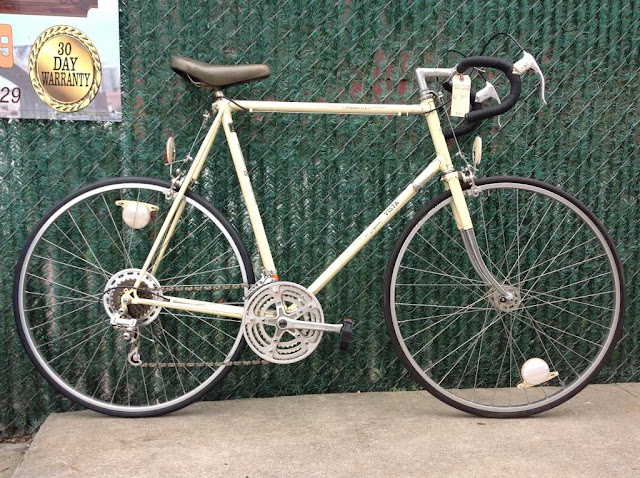This month--February--is Black History Month here in the US.
Mention "black cyclists" and one of the first names that comes to mind is "Major Taylor".
He was the first African-American athlete to win the world championship of any sport. (Canadian bantamweight boxer George Dixon was the first black athlete to accomplish that feat.) Although he was one of the most famous and admired athletes in the world, the "Worcester Whirlwind" was not insulated from racism.
 |
| The Worcester Whirlwind, circa 1900. From wikipedia. |
The city from which Taylor's nickname was derived--Worcester, Massachusetts--was one of the centers of the Abolitionist movement. Even so, not everyone there welcomed him with open arms. When he bought a house in the well-to-do Columbus Park enclave, alarmed white neighbors tried to buy it back from him.
 |
| Even if you're the best in the world, you can't stop fools from being foolish. |
Even so, life was better for him in Worcester--and in the rest of the Northeast--than it was elsewhere in the US. While he won pretty much every race and award that could be won in his home region, he could not advance his career unless he won in other parts of the country. Two things conspired against him: One, owners and promoters of races and tracks in the South banned him--and all other black cyclists--outright. Second, in 1894, just as Taylor's career was in ascendancy, the League of American Wheelmen--then the governing body of bicycle racing--voted to ban blacks. Some have speculated that the ban was specifically aimed at Taylor, who, even at the age of 17, was beating his white challengers, some of whom were far more experienced than he was.
(The LAW is now known as the League of American Bicyclists.)
That ban, of course, closed other doors for him. There were, however, a number of races--mostly in the Northeast--that allowed him to compete. And, of course, he went to Canada: In 1899, he won the World Championship for the one-mile sprint in Montreal.
(Interesting aside: In 1946, Jackie Robinson played for the Montreal Royals, which was the top minor-league team of the Brooklyn Dodgers. Fans in Montreal embraced him, as they did Taylor half a century earlier.)
But even in the relative tolerance of his home region, Taylor encountered hostility. He was often denied lodgings and food on account of his color, and white racers turned into pure-and-simple thugs when riding against him: One opponent hauled him off his bike and choked him into unconsciousness.
In the racial atmosphere of that time, the only way Taylor could advance his career was by racing in Europe. He, in fact, had a number of offers to participate in races and join teams, especially in France. He was grateful for the opportunities but would not accept them at first: In Europe, many races were held on Sunday, as they are now. Taylor had become a devout Baptist after his mother's death and would not race on the Sabbath.
Some of the offers he received were lucrative, to say the least. When pleas and urgings from prominent African-Americans as well as cycling fans had no effect on him, black newspaper editors of the time published what we would now call "fake news"--saying that his religious scruples had been conquered by Mammon--or editorials speculating that such a thing would happen.
Of course, it didn't. Finally, in 1901, a French team offered him a contract that specified he wouldn't have to race on Sunday. He accepted, and before he even mounted a bicycle on the other side of the Atlantic, he was treated to a hero's welcome.
 |
| An American in Paris. |
Europeans were as impressed with his dignity and grace as they were with his athletic prowess. He did much to help improve the level of European racing, not only by his presence, but also by mentoring young racers. Here is one account of such tutoring, from his autobiography:
I recall that on my first trip to Europe in 1901 I saw a French youth, whose name was Poulain, ride in an amateur event at Nantes, France. He was very awkward as he rode about the track, but something about him caught my eye, and I became interested in him at once. At the close of the race I made several suggestions to him, adjusting his pedals, and handle bars, and giving him some advice on how to train. I stressed clean living upon him, and told him in conclusion that if he trained carefully and lived a clean life, I would predict that some day he would beat all the amateurs of Europe and the professionals as well.
When I returned to France in 1908 this same Poulain, who in the meantime had won the amateur and professional championships of France, defeated me in a special match race. Imagine my surprise at the conclusion of this event when my conqueror told me who he was. The laugh certainly was on me. I did manage to bring him into camp, however, after I reached by best form.
"The laugh was certainly on me." How could they not love someone with such an attitude? Unfortunately, not everyone in his home country felt the same way.





























